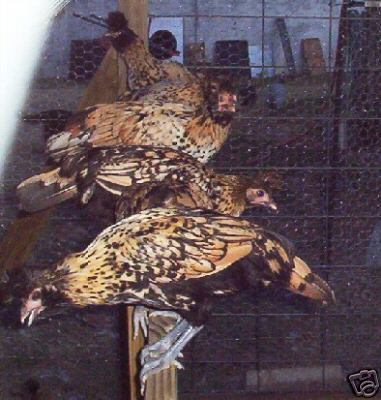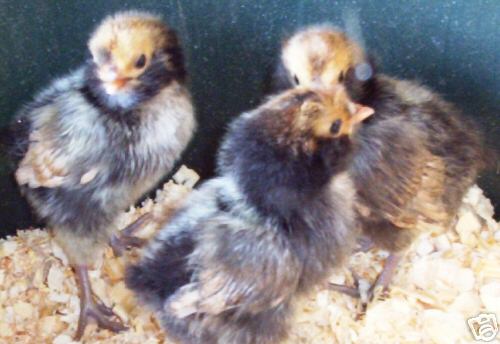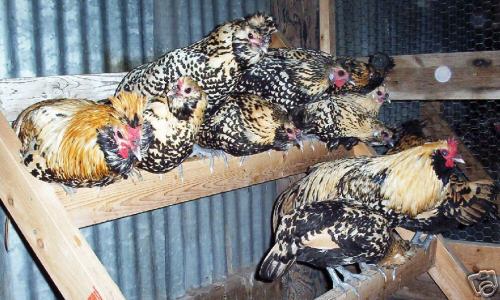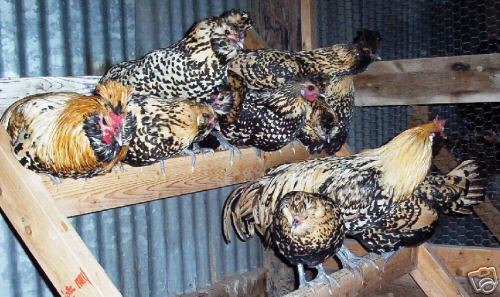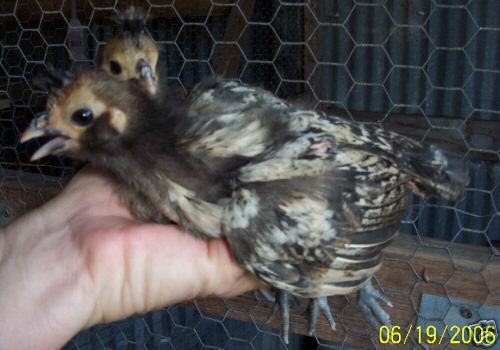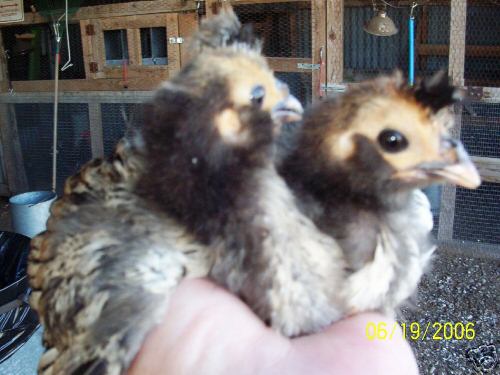|
18 (plus extras when available) HATCHING EGGS Cream Brabanter Hatching Eggs! From 1st year layers, new pullets started laying in November this year, good hard shells and healthy embryos! We find these birds to be pretty docile. The more you handle them the tamer they are. They do not canabalize as much as some birds tend to. They can stand close confinement. They are efficient feeders. They are early layers. They lay whitish eggs of medium to large size. Imported from the Netherlands. NOT ADMITTED INTO THE AMERCAN STANDARD PLUS FREE INSTRUCTION SHEET FOR HATCHING EGGS AND RAISING BABY POULTRY ALL OF OUR BIRDS ARE FED THE FINEST FEEDS AND WORMED REGULARLY. THEIR PENS AND GROUNDS ARE KEPT CLEAN. THEY ARE DUSTED WHEN NEEDED FOR RED MITES. PINE SHAVINGS ARE USED IN THE NESTS TO KEEP THE EGGS CLEAN. WE ARE REGISTERED WITH THE TEXAS ANIMAL HEALTH COMMISSION FOR DOMESTIC AND EXOTIC FOWL. OUR CERTIFICATE OF REGISTRATION PERMIT NUMBER FR-002250...WE PARTICIPATE IN THE NATIONAL POULTRY IMPROVEMENT PLAN (NPIP). OUR FLOCK IS CERTIFIED POLLORIUM/TYPHOID FREE. HAVE A GREAT DAY AND HAPPY HATCHING! Be sure to add me to your favorites list! Cream Brabanters as well and Gold Brabanters are extremely rare in the United States; very few breeders attempt to breed Brabanters, which are not readily available. The Netherlands Standard lists the Netherlands as the origin of Brabanters while other literature indicates that this is a very ancient breed. Paintings from the 16th and 17th Centuries show fowl that look like this breed. As of January 2006, the American Poultry Association has not accepted Gold or Cream Brabanters as a Standard Variety. Brabanters, which are hardy and lay at an early age, are good layers of large white-shelled eggs and are known as excellent winter egg producers. The most recognizable characteristics of Brabanters are the flat-sided upright crest with front feathers that are bent a little forward and their well developed muffs and beard, which form three lobes that cover the cheek and chin. The crest should not be as large of globular as the Polish varieties. The plumage is fairly hard and right, similar to Polish varieties. They have very large bodies: although, they are not heavy in bone. They have the appearance of strong, hardy birds. The shape of the body, which thickens considerably from the breast to stern, helps to determine that it is evidently a good layer since there is ample space in the region of the egg organs. The posterior part of the body is carried low, without the legs being short, and in the case of the hens, it almost touches the ground. The males have a moderately upright carriage of their body which is moderately narrower at the tail. The head is medium sized, rather broad between the eyes without a protuberance. They have a V-shaped comb consisting of two small, separated, rounded spikes placed in front of the crest. They have beaks that are medium in size, powerful and slightly curved. If wattles are present, they are very small and covered by the beard. The white ear lobes are small and concealed by the muffs. They eyes, which are prominent and alert, Are orange to red brown. The neck, which is fairly long, slightly curved and carried erect, has an abundance of hackle plumage. The back, which slopes downward, is fairly long. The breast that is carried a little forward is broad, full and rounded. The tail, which is carried at a 60-degree to 70-degree angle above horizontal, is large and well spread. The well-developed thighs are of medium length and set well apart. They have four toes on each foot that are well spread. The general characteristics of the female are similar to those of the mail, allowing for the natural sexual differences. All of the fairly tight, hard plumage of the Cream Brabanter is cream with each feather ending with a half-moon black spangle; however, the color of the tail may be entirely black. They have a horn beak and lead blue legs and feet. Chicks are light brown to dark brown with crest, muffs and beard. The clean legs are gray. If there is a comb, it will be V-shaped. (please look at our rules and privacy policy) |
Aallen@machine--tools.com (Alyssa Allen) for additional information. This email is used for forwarding to newsgroup user.
